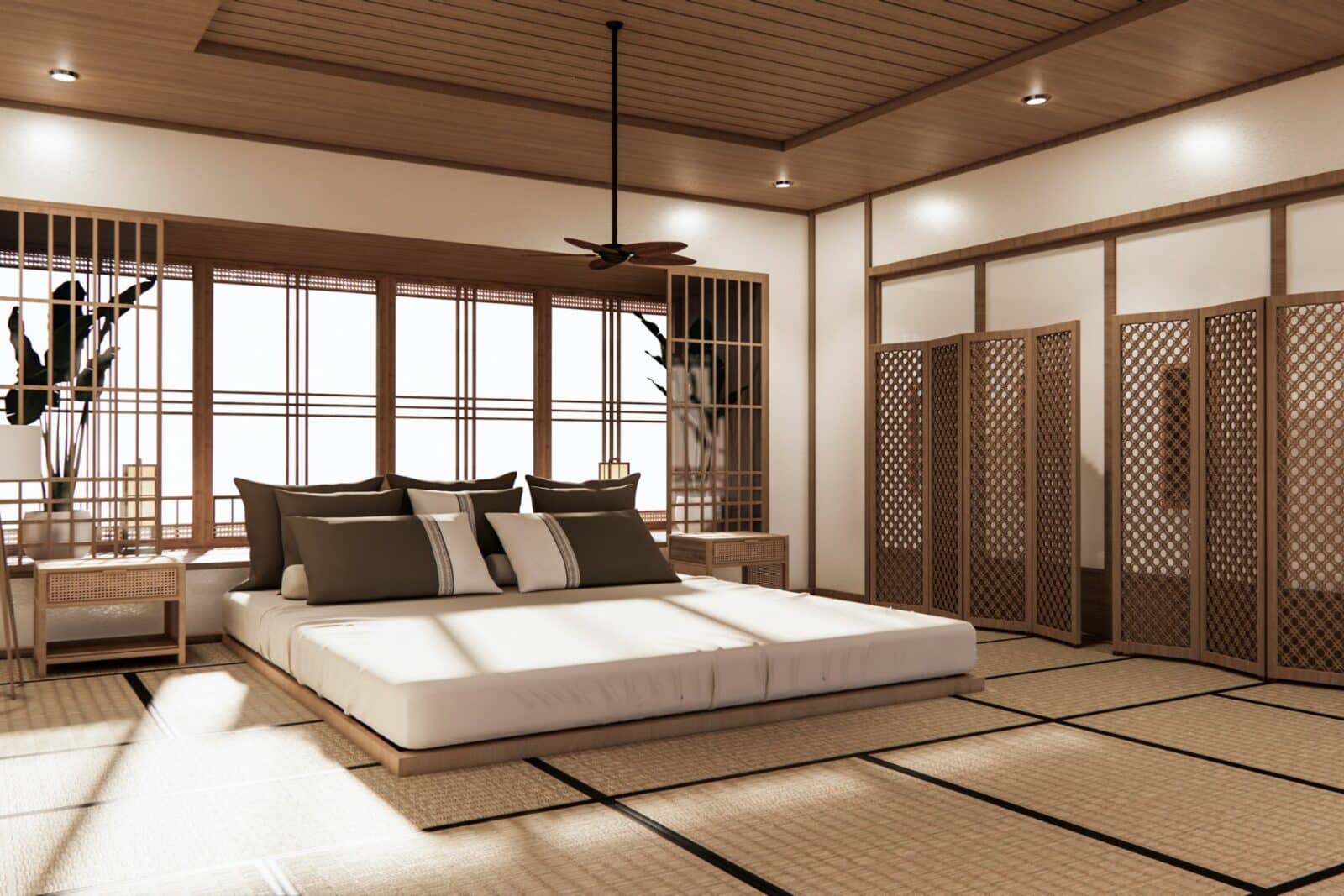The Japanese bed room design philosophy encapsulates tranquility, simplicity, and a profound connection with nature. Rooted in Zen aesthetics, this design approach embraces minimalism, clean lines, and functional beauty. A well-designed Japanese-inspired bedroom becomes a haven of serenity, promoting relaxation and balance. In this comprehensive guide, we delve into the world of Japanese bedroom design, offering insights, ideas, and inspiration to help you create a peaceful and minimalist retreat.
The Essence of Japanese Bedroom Design
Japanese design principles celebrate the beauty in simplicity, making the bedroom an oasis of calm amidst the chaos of daily life. The design elements prioritize functionality, natural materials, and a harmonious blend of textures and colors. By embracing the Japanese design philosophy, you can create a bedroom that not only reflects your personality but also offers a respite from the outside world.
Japanese Bedroom Design Ideas and Inspirations
Futon Beds
Opt for a futon bed instead of a traditional Western-style bed. A futon can be easily rolled and stored, allowing you to maximize space and embrace the concept of multifunctionality.
Shoji Screens
Incorporate traditional Shoji screens to create a sense of privacy and diffuse soft, filtered light. These screens add an authentic touch to your Japanese-inspired bedroom.
Natural Materials
Choose natural materials like wood, bamboo, and rice paper. These materials evoke a connection to nature and bring a warm, organic feel to the space.
Minimalist Furniture
Embrace minimalist furniture with clean lines and a functional design. The focus is on pieces that serve a purpose without cluttering the room.
Neutral Color Palette
Stick to a neutral color palette dominated by earthy tones, whites, and muted pastels. This palette creates a calming backdrop that promotes relaxation.
Tatami Flooring
Consider tatami flooring for an authentic Japanese touch. The soft, woven mats add texture and comfort to the room while enhancing the overall aesthetic.
Zen-inspired Decor
Incorporate Zen-inspired decor elements like bonsai plants, bamboo accents, and water features. These details enhance the sense of tranquility.
FAQs about Japanese Bedroom Design
Can I incorporate modern elements into Japanese bedroom design?
Absolutely! Modern elements can complement Japanese design. Just ensure that they adhere to the principles of simplicity and functionality.
Do I need to have tatami flooring for an authentic Japanese bedroom?
While tatami flooring is a traditional feature, it’s not essential. You can achieve the Japanese aesthetic by focusing on other design elements.
Are there specific color palettes for Japanese bedroom design?
Neutral color palettes with earthy tones, whites, and soft pastels are common in Japanese design. These colors create a serene and balanced atmosphere.
How do I create a clutter-free environment in a Japanese bedroom?
Prioritize storage solutions and minimalist furniture. Regular decluttering and thoughtful organization are key to maintaining a serene space.
Can I mix Japanese design with other styles?
Yes, Japanese design elements can be blended with other styles. However, ensure a harmonious balance to prevent a clash of aesthetics.
Are Japanese bedrooms suitable for small spaces?
Absolutely! Japanese design is known for its space-saving solutions. Embrace multifunctional furniture and minimalist decor to optimize the space.
Conclusion: Designing Harmony in Your Bedroom
Japanese bedroom design transcends aesthetics to become a lifestyle choice that promotes balance and mindfulness. By infusing your space with simplicity, nature-inspired elements, and functional beauty, you can create a serene haven where relaxation and rejuvenation are the ultimate goals. Let the essence of Japanese design guide you as you craft a bedroom that not only reflects your style but also nourishes your well-being.








